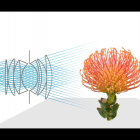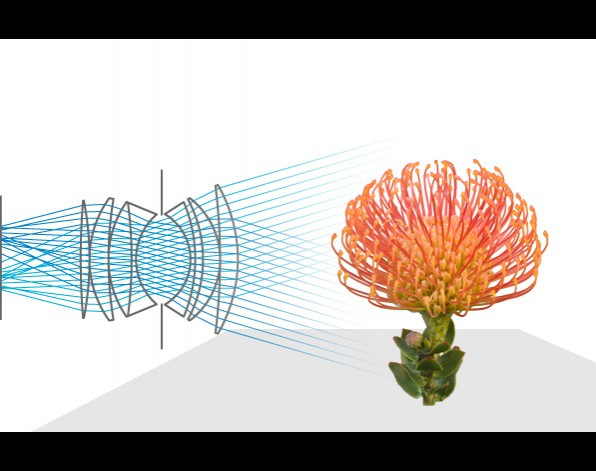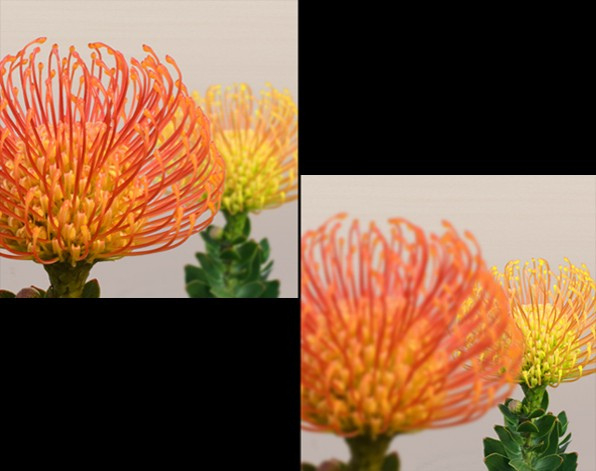
For those of you who are annoyed with the focusing, either manually or automatically, that you have to do each time before you take a picture with your point-and-shoot or dSLR some of the promises made by Lytro, a start-up company located in Silicon Valley, could be just the thing. They are bound to change the ways of photography forever. .. at least that is what Ren Ng, CEO of Lytro, claimed in a much discussed interview last month.
What is Lytro Photography?
The term light-field refers to the technology which is used to record visual information with the new digital cameras that Lytro promises will hit the markets before the end of this year. By placing an array of micro-lenses just above the sensor that records visual information in the camera, Lytro products will not only be able to record color and intensity of the light that is reflected from the photographed object, but also the directions of the rays inside the area that is recorded in the picture.
This can be done because the different micro-lenses look at objects from slightly different angles – just like the multi faceted eyes that are common in the world of insects. By doing this, the actual act of focusing the light before taking a picture is made obsolete. As a result many mechanic components that were vital ingredients in every camera up to now would not be featured in the light-field, or plenoptic cameras. This in turn calls for rather highly sophisticated software which will be needed to process the pictures during post-production.
Change Focus After the Fact
As all the directions of all the rays of light are recorded by this new technology, some heavy duty processing makes it possible to change the focus of the picture after the fact. In more common terms this means that every photographer, be it enthusiast or professional, can stop worrying about focusing on the respective object, because you can now decide which point in the picture to focus on long after you have taken the picture (to check this function out, click around with your mouse on the picture posted below this paragraph). Some argue that this will help taking lively and important images since you can push the release button of your camera when you actually want to capture something. You will never again miss the cute expression on your baby’s face or the weird motion of your favorite pet by taking the few seconds to focus.
As you can see in the two pictures the focus is on completely different spots, causing other areas of the picture to appear blurry and out of focus. I guess now you get what all the excitement is about 🙂
Indefinite Depth of Field
Another feature that provided for a big chunk of the discussions’ content over the last month is the prospect of indefinite depth of field (DOF). In what you get from discussions on related forums, people are very excited about this indefinite DOF since it would mean that everything that appears in the viewfinder when taking the picture can be totally crisp and focussed after the visual information is being processed with the Lytro software. This assumption makes sense since the company advertises that the customer can completely choose were the focus should be, even after taking the picture. So in theory it would be logical to think that indefinite focus can be achieved.
With any of the popular consumer cameras that are on the market now the photographer can only achieve a limited DOF. As many of you will know, the DOF in a picture increases with small aperture (big f-stop meaning small aperture). So the smaller a lens opens up, the more of the objects placed in different distances from the camera will be in focus. But until today an indefinite DOF with a consumer camera has not yet been achieved, for normally the biggest f-stop on a lens (meaning dSLR lens) would be at 22. But it is uncertain if the new Lytro technology can deliver this feature that many wish for.
New Digital Camera Technology Always Comes With A Cost
Although the things that this new technology seems to be promising, there are also some downsides. For example when you check out the picture gallery on the developer’s website, and play around with the pictures, doing some zooming and refocussing, you will notice that the picture quality is actually comparably poor. This is because much of the camera’s sensor is used for calculating the additional data that has to be recorded to do all the focus-magic described above. So the camera will likely only be able to take pictures with half of the amount of pixels that is standard in modern consumer cameras (around 12 megapixels). So it will be rather hard to blow those pictures up to poster-size and hang them on the wall. But maybe the company is still fine-tuning the device, thus the low quality on the website… could be.
Another thing that has been going around the forums is skepticism about whether or not the actual device will be of reasonable physical size. Actually research on light-field cameras isn’t quite as new as one might believe, but prototypes have most likely not been of a size that would fit into a pocket.
All that is left for now is to wait for the product release later this year and see how it will turn out in the end. One thing is certain; Lytro obviously has done their homework as one can tell from the long list of sponsors and funders. The other thing is that this new technology will most likely revolutionize photography to some extent, it’s just a question as to what degree.




